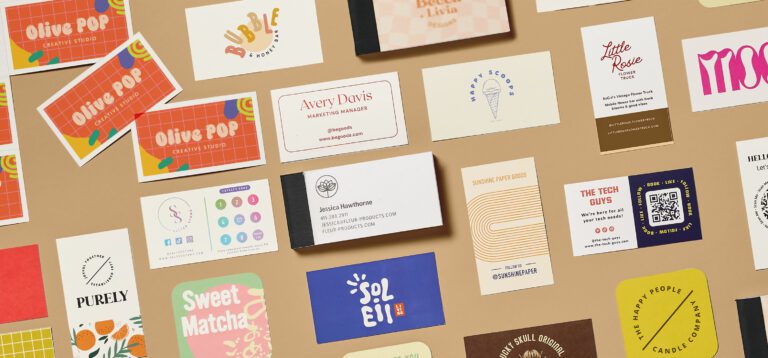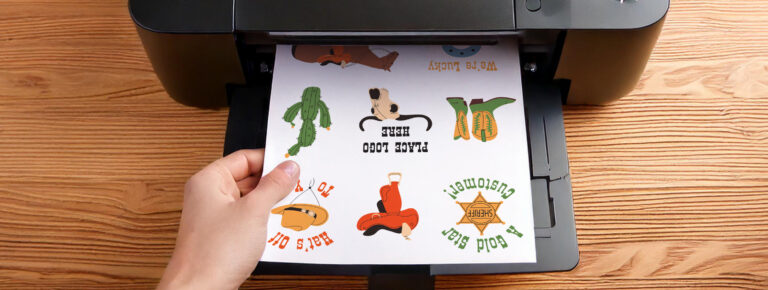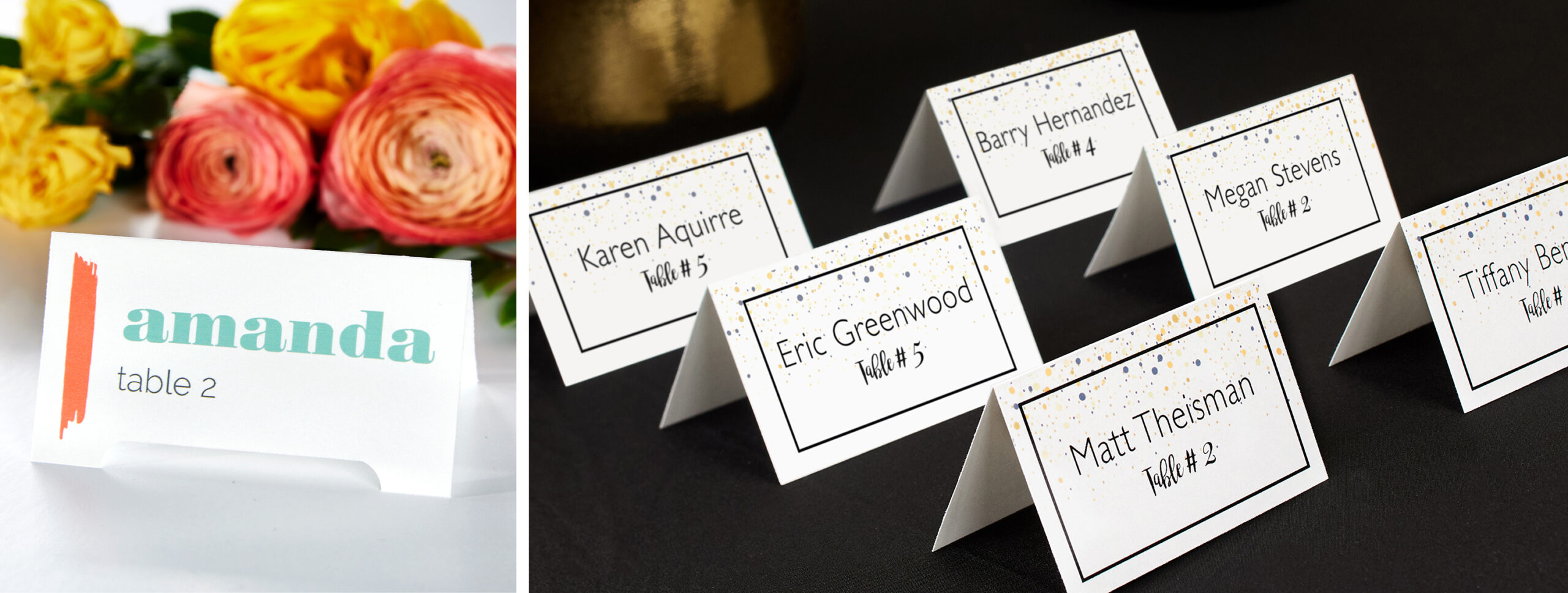
How to Make Wedding Place Cards: Tips, Ideas & Free Templates
Estimated reading time: 14 minutes
An expert guide to DIY wedding place cards
At the heart of every unforgettable wedding reception lies a subtle yet indispensable detail: the place card. While they might be small in size, wedding place cards play an essential role in creating both order and elegance for your special event. They’re not just table assignments; they’re personal touches that set the tone for an unforgettable evening. However, with so many different styles and options available, it can be tough to know where to start.
That’s why we’ve put together this comprehensive guide to help you navigate the world of wedding place cards. We’ll cover everything from types of place cards to basic etiquette, as well as helpful tips and creative DIY inspiration. We’ll also share some of our popular, easy-to-customize Avery templates for wedding place cards. Get ready to turn those place cards into conversation starters, memory-makers, and the perfect finishing touch to your dream wedding!
More wedding articles you might like:
- Wedding Planning Tips and Free Tools for Your Big Day
- How to Create Save-the-Date Cards
- Create Custom Wedding Address Labels and More
- 11 Tips for Printing Beautiful DIY Wedding Cards
- Formatting Tent Cards
Are place cards necessary at a wedding?
Place cards are not strictly necessary at a wedding; however, as mentioned, they can play an essential role in a well-organized wedding. These unassuming cards do more than just designate seats; they streamline the event, ensuring guests feel valued and comfortable. They serve as the unsung heroes in avoiding confusion, especially in larger gatherings, and effortlessly guide guests to their assigned spots, making mingling and dining a seamless experience.
Beyond practicality, though, place cards also add a touch of thoughtfulness to your celebration. They act as a personalized gesture, showing each guest they hold a distinct place in your celebration. Even in more casual settings, these cards can elevate the ambiance, signaling a level of care and attention to detail that leaves a lasting impression on your guests. Plus, they can make great keepsakes for guests to remember the special day.
Types of place cards
When it comes to wedding place cards, the variety of styles ensures there’s something for every wedding theme and preference. Selecting the right place cards for your wedding can set the tone for your event. These cards do more than assign seats; they also add flair to your table settings. Let’s explore the different types of place cards available and how you can use each option to personalize your wedding day in its own way.
- Tent cards are a classic choice. Their folded design allows for easy visibility and can be customized with intricate designs and an elegant font or calligraphy.
- Tags offer a more whimsical touch. They can be hung from glasses or placed atop napkins, adding a rustic or vintage feel to the table setting.
- Business cards or flat place cards are sleek and compact with a modern flair. Their streamlined design is perfect for minimalist or contemporary-themed weddings, offering a chic accent to the dining setting.
- Labels are versatile and easily adhere to various surfaces for amazing flexibility. They can be affixed to all types of favors, doubling as keepsakes for guests.
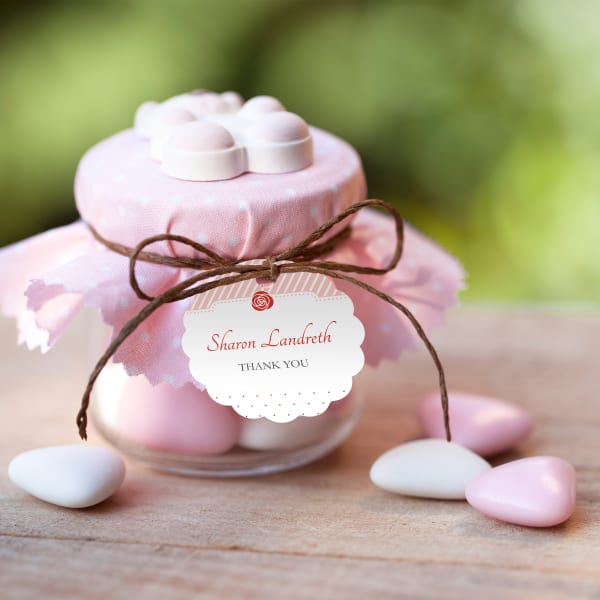
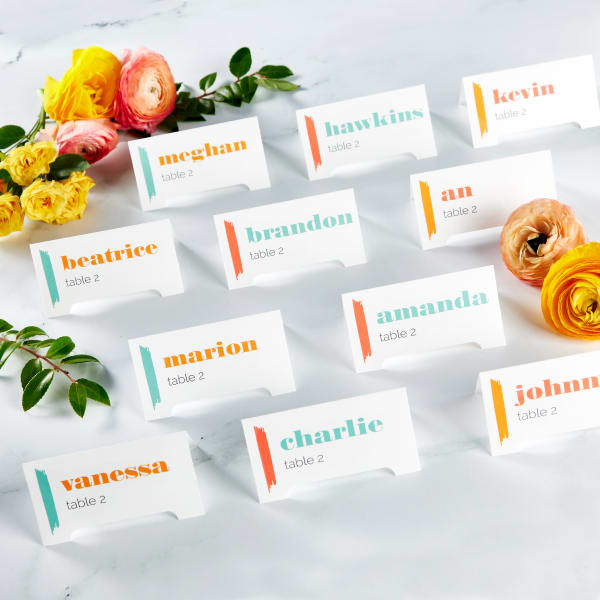
Place cards vs. escort cards
Confused about place cards vs. escort cards? Let’s clear things up. While place cards and escort cards might seem similar, they serve different purposes when it comes to wedding seating arrangements. First of all, place cards reside directly at each guest’s seat, indicating their spot at a specific table. These little cards include individual names, ensuring guests find their places without any confusion.
On the other hand, escort cards act as guides to the tables themselves. They are often displayed at the entrance of the reception area, indicating which table each guest or group is assigned to, but they don’t specify the exact seat. In essence, escort cards ‘escort’ guests to their general seating area.
The choice between place cards and escort cards often depends on the desired level of personalization and organization. Place cards are perfect for a more formal affair with a structured seating plan, assigning specific seats and ensuring smoother transitions throughout the event. Escort cards offer a more relaxed vibe, guiding guests to their tables but allowing for more flexibility in seating arrangements within each table.
Do you need a seating chart if you have place cards?
The answer to whether a seating chart is necessary if you already have place cards will largely depend on the scale and intricacy of the wedding. Place cards show guests where they sit at specific tables. A seating chart, though, gives an overall view of the tables at the event entrance. For big or complicated weddings, the chart helps guests find their tables easily. In smaller or simpler setups, clear place cards might be enough.
When deciding whether to have both, consider the guest count, venue layout, and how organized you want things to be. Ultimately, it’s about choosing what works best for your wedding size and how much help guests might need to find their seats.
Basic place card etiquette
Knowing some wedding place card rules can help ensure your reception runs well. From where to place them to getting the details right, it’s about making every guest feel comfortable and valued. Let’s dive into the basics of place card etiquette, making sure your seating plan is both organized and thoughtful. Here are the answers to some of the most common questions people have about wedding place cards:
What size are wedding place cards?
Wedding place cards come in various sizes, but the standard dimensions are about the size of a business card, around 2 inches by 3.5 inches. This size offers a familiar and convenient format for seating arrangements. However, the great thing about place cards is their adaptability. Their sizes can vary to suit the table layout and match your wedding decor seamlessly.
For larger tables, for example, opting for bigger tent cards like the elegant Avery 5305 embossed tent cards, could be a smart choice. These larger cards not only accommodate more legible text but also add a touch of sophistication to grander settings. Conversely, in more intimate settings, smaller options like the Avery 80511 2-1/2″ scallop round tags can double as charming place card tags attached to your wedding favors, adding a personal touch.
Regardless of size, the key consideration is legibility. Ensure the place cards are large enough for your guests’ names to be clearly read. Balancing size with practicality ensures that guests easily find their seats without any confusion, helping the event run smoothly.
Do you handwrite wedding place cards?
Handwriting wedding place cards often adds a personal and intimate touch to the celebration. But before you bust out the calligraphy pens, consider the scale of your celebration. For small weddings, handwriting each place card is a charming DIY project. For larger guest lists, however, it can eat up precious pre-wedding hours.
Printed cards, on the other hand, offer elegance with minimal effort. This is especially true when using Avery Design & Print Online (ADPO), which allows you to easily customize and print your wedding place cards in minutes. Ultimately, choose the option that fits your budget, timeline, and style.
Do you put first and last names on place cards?
Traditionally, wedding place cards include each guest’s first and last name. This ensures clarity and avoids any confusion, especially in larger weddings where multiple individuals might share the same first name. Including both names also adds a formal touch to the seating arrangement. However, for more casual or intimate settings, using only first names can create a friendly sense of warmth and familiarity among guests. Consider your overall vibe and guest list, then pick the option that sets the perfect tone for your celebration.
Do you put Mr. and Mrs. on wedding place cards?
In traditional place card etiquette, formal titles are included along with each person’s full name. This includes Mr., Mrs., Ms., Dr., etc. However, if formal traditions aren’t typically your thing, feel free to exclude them. If unsure, consider your overall vibe: are you aiming for classic elegance or a relaxed atmosphere? Opt for titles for a formal feel; skip them for a more casual, relaxed air. Whichever way you choose, just remember to be consistent with each guest to avoid any unintentional snubs.
Should wedding place cards be individual or couple?
Choosing individual or couple place cards comes down to personal preference and guest familiarity. Individual cards offer a more tailored touch, especially for larger weddings with diverse connections. But for couples, a single card can keep things tidy and encourage social interaction for a friendlier, more engaging experience. There is no right or wrong answer; just choose the option that creates a welcoming and inclusive atmosphere for all your guests, whether single or paired.
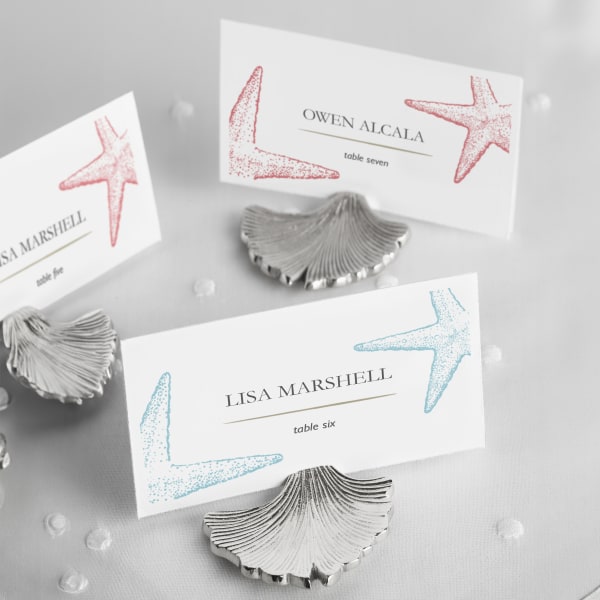
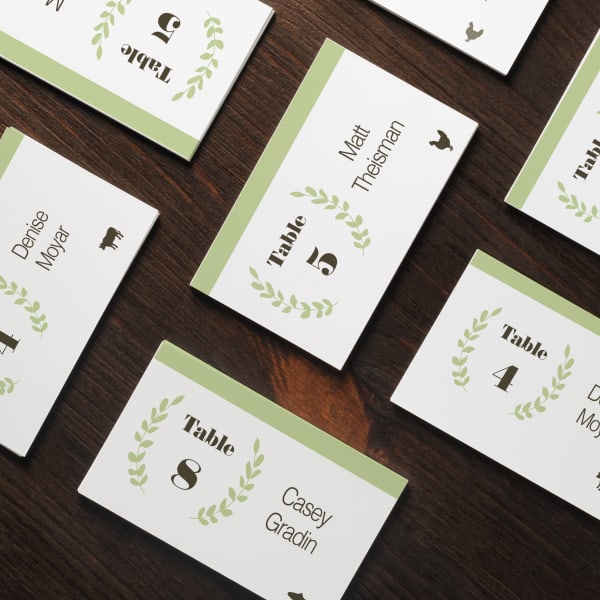
Additional place card tips
Now that we’ve covered some of the common questions about wedding place card etiquette, here are a few more things to keep in mind when creating seamless seating and adding a personal touch to your celebration. From tips on font selection for legibility to creative ways of incorporating them into your decor, these extra tips aim to elevate your place card game, ensuring your guests feel truly welcomed.
- Keep the font size readable so your guests don’t need to squint to read their names. Your font size should be large enough to read from a few feet away.
- Use high-quality cardstock. This will help to ensure that your place cards look polished and professional.
- Order your place cards well in advance of your wedding. This will give you plenty of time to assemble them if you’re making them yourself.
- Proofread your place cards carefully. You don’t want to send any guests to the wrong table!
- Display your place cards creatively. Use a place card holder, or get creative and display them in a way that complements your wedding décor.
- Ask your venue if you need to provide meal-choice place cards. These place cards denote the meal choice of each guest, so the servers know what entrée the guest requested. There are different ways to indicate meal choice on place cards, including using different colors, different designs, or adding small icons or images (i.e., chicken, fish, carrot, etc.).
How to design & craft DIY wedding place cards
Wedding place cards give your guests a warm welcome to the reception while adding a decorative touch to every table. Whether your wedding style is romantic, vintage, or ultra-glamorous, it’s easy to create your own unique place cards to complement the style.
Begin by choosing the type of place card you prefer. Choose from various options like tent cards, tags, flat cards, or labels based on your wedding theme and desired aesthetic. Once you’ve picked the type that best complements your style, delve into the design process. Start by aligning the design with your wedding’s overall tone. For a rustic vibe, go with natural colors and elements. For a more elegant affair, opt for embossed paper and intricate designs.
Next, get creative with the design. Handwritten calligraphy adds a charming and personalized feel, but if penmanship isn’t your forte, printed fonts or stamps can achieve a polished look. Finally, ensure clarity and legibility by keeping the font size readable and choosing colors that contrast well with the background. With a dash of creativity and attention to detail, your chosen DIY wedding place cards become delightful keepsakes for your guests while adding a unique flair to your tablescape.
Designing wedding place cards in ADPO
For quick and easy personalization, design your wedding place cards using Avery Design & Print Online. Import your own design or browse through our wide range of professionally designed and perfectly crafted templates for wedding place cards. Our user-friendly software offers a seamless experience, allowing you to personalize these templates and add your unique touch.
Once you’ve found the right template, it’s time to make it your own. With our easy tools, you can change text sizes, fonts, colors, and even add pictures or graphics. As mentioned, you can even add the names of all your guests at once using our Mail & Data Merge feature. Plus, you can preview everything before printing, making sure each card looks perfect.
Get started now by browsing our wedding design galleries for inspiration or use one of our popular templates below.
Tent card templates for wedding place cards

Print this design yourself on Avery Arched Tent Cards with Sure Feed 35700 using laser or inkjet printer.
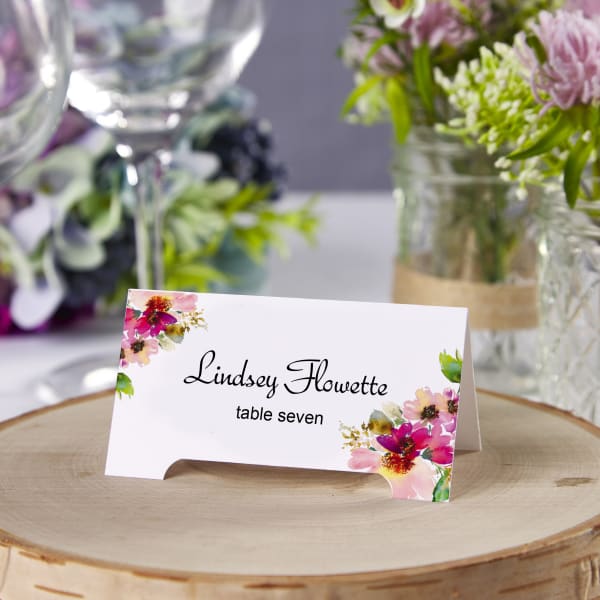
Print this design yourself on Avery Arched Tent Cards with Sure Feed 35700 using laser or inkjet printer.
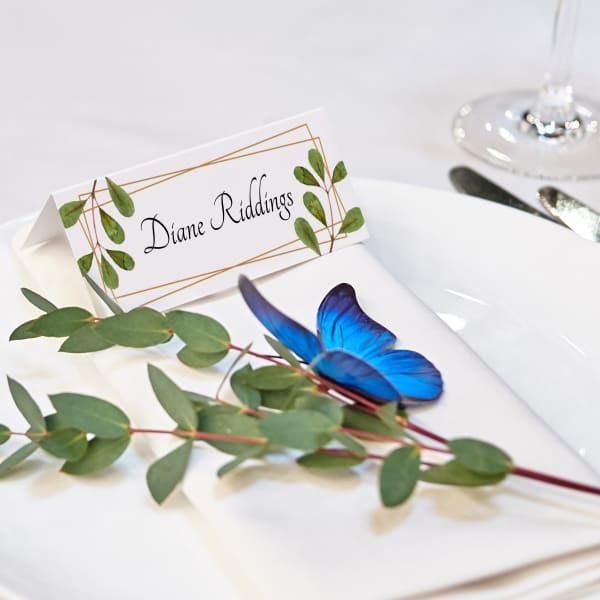
Print this design yourself on Avery Place Cards with Sure Feed 5011 using laser or inkjet printer.
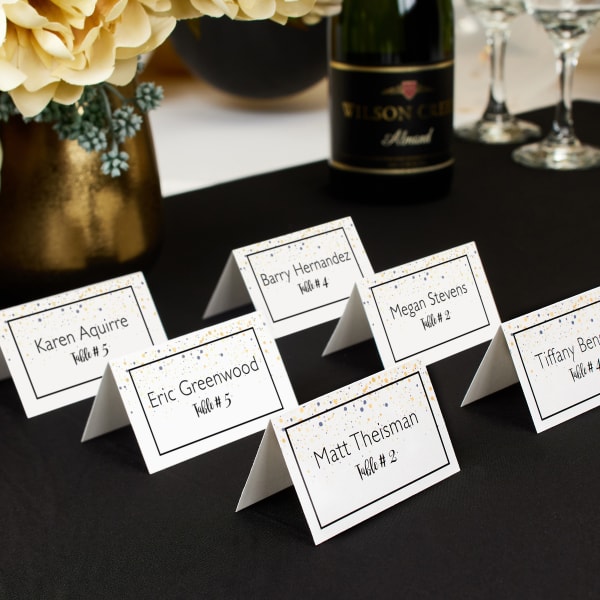
Print this design yourself on Avery Tent Cards with Sure Feed 5302 using laser or inkjet printer.
Or, choose “Let Us Print for You” after customizing the design to order custom-printed small tent cards.
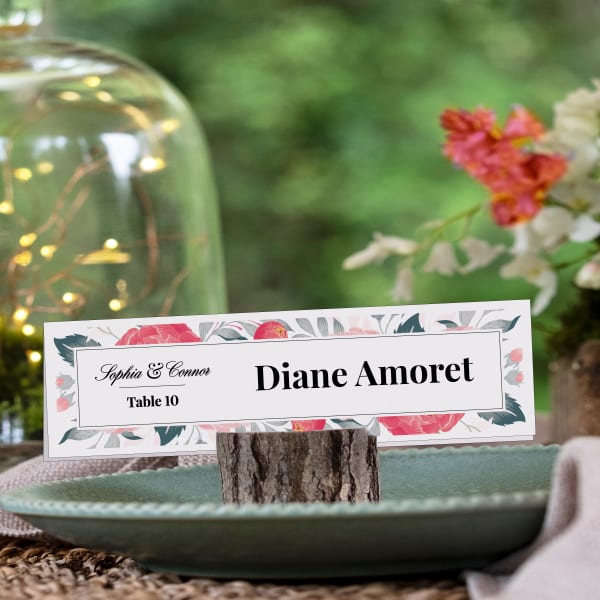
Print this design yourself on Avery Embossed Tent Cards 5305 using laser or inkjet printer.
Or, choose “Let Us Print for You” after customizing the design to order custom-printed large tent cards.
Gift tag templates for wedding place cards
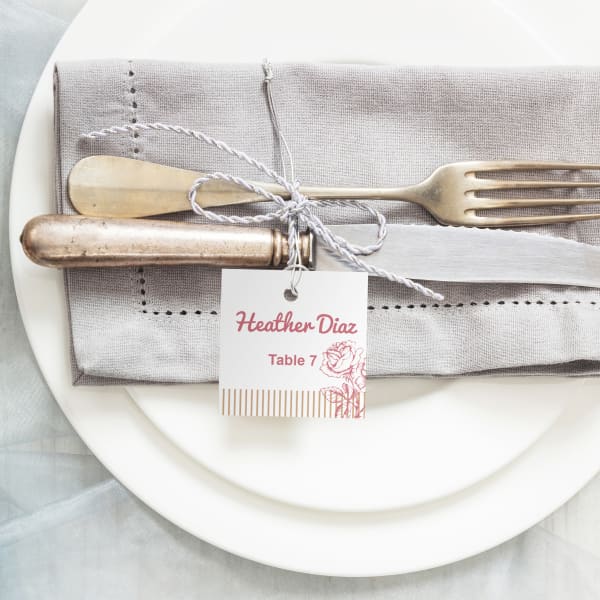
Print this design yourself on Avery Square Tags with Strings 80513 using laser or inkjet printer
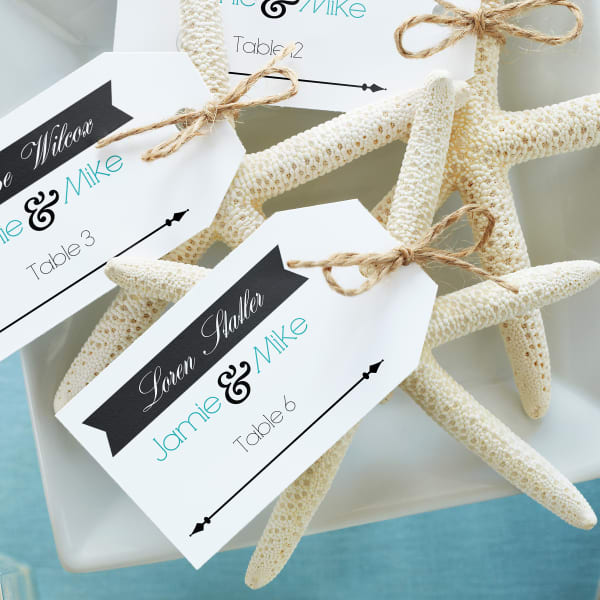
Print this design yourself on Avery Rectangular Tags 22802 using inkjet printer.
Or, choose “Let Us Print for You” after customizing the design to order custom-printed 2″ x 3-1/2″ banner hang tags.

Print this design yourself on Avery Scallop Round Gift Tags 80511 using laser or inkjet printer.
Business card templates for wedding place cards

Print this design yourself on Avery Clean Edge Business Cards 05870 using a laser printer.
Or, choose “Let Us Print for You” after customizing the design to order custom-printed 2” x 3-1/2” cards.
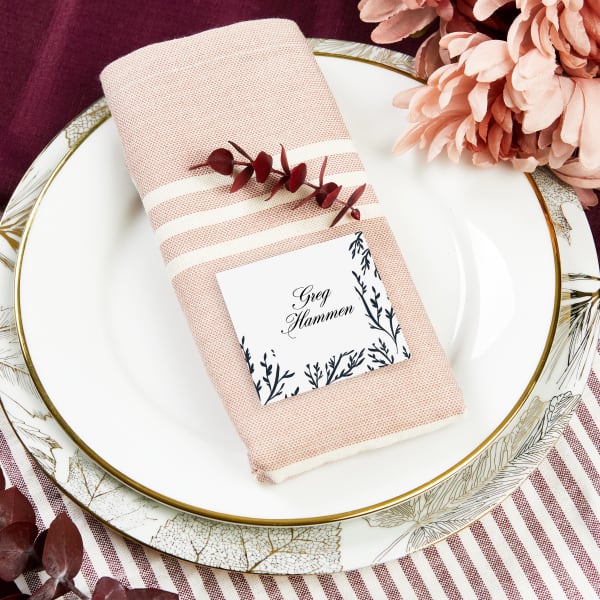
Print this design yourself on Avery Square Cards 35006 using an inkjet or laser printer.

Print this design yourself on Avery Glitter Cards 5893 using an inkjet printer.
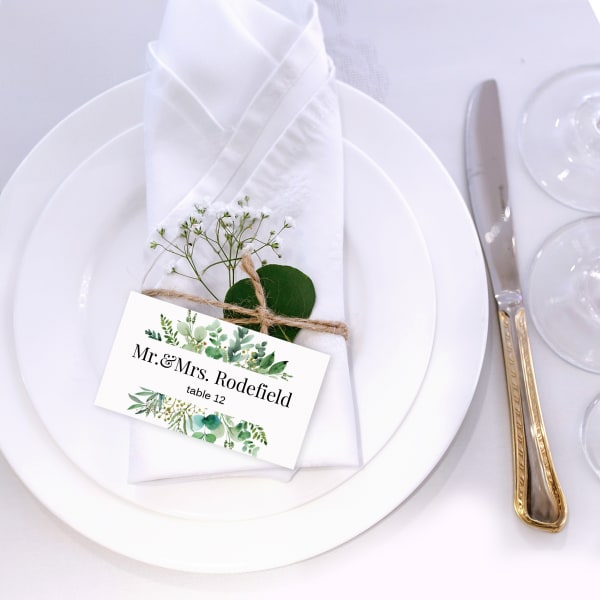
Print this design yourself on Avery Clean Edge glossy white business cards 8801 using an inkjet printer.
Label templates for wedding place cards
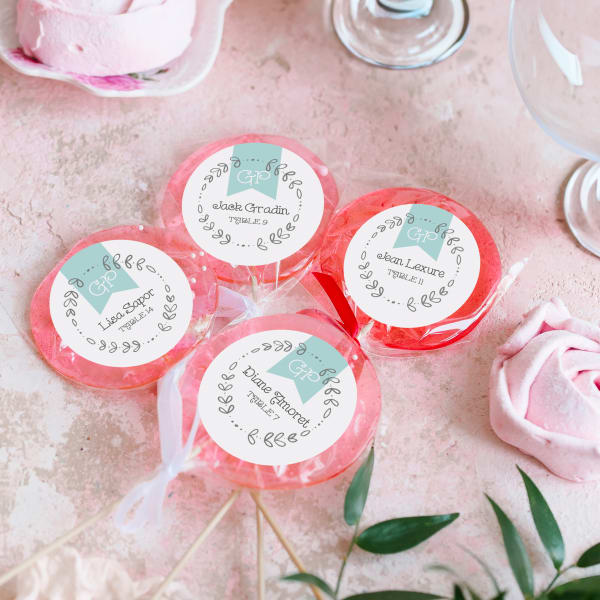
Print this design yourself on Avery 2-1/2” Round Labels 22562 using a laser or inkjet printer.
Or, choose “Let Us Print for You” after customizing the design to order custom-printed 2-1/2” round labels.
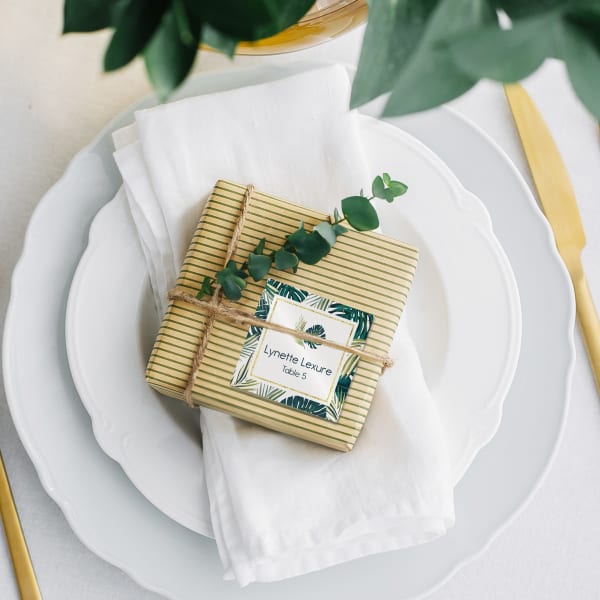
Print this design yourself on Avery Glossy White Square Labels 22565 using a laser or inkjet printer.
Or, choose “Let Us Print for You” after customizing the design to order custom-printed 2” x 2” square labels.
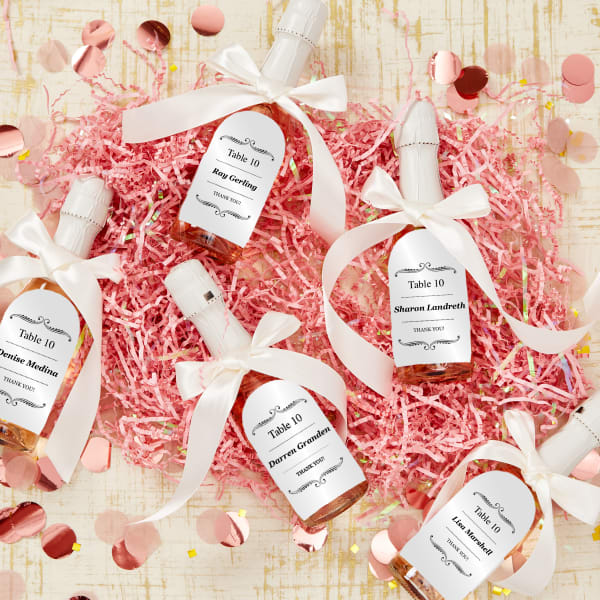
Print this design yourself on Avery 3″ x 2-1/4″ Arched Labels 22809 using a laser printer.
Create the finishing touch for an unforgettable wedding
Throughout this guide, we’ve explored the world of wedding place cards, discussing how these small details can make a big impact on your big day. We looked at different types of place cards, like classic tent cards, charming tags, elegant flat cards, and versatile labels. Each type has its own unique style, giving you plenty of room to be creative and add a personal touch to your celebration.
We’ve highlighted the significance of understanding place card etiquette, picking a design that matches your wedding style, and customizing your cards with tools like Avery Design & Print Online. The flexibility to add personal touches, be it with handwritten calligraphy or creative decorations, lets you turn each card into a charming keepsake for your guests.
Hopefully this guide can help make your wedding celebration an unforgettable experience, one beautifully crafted place card at a time! Feeling inspired and eager to explore more? Check out our Pinterest board with creative ideas and projects dedicated to weddings, or follow us on Instagram.


